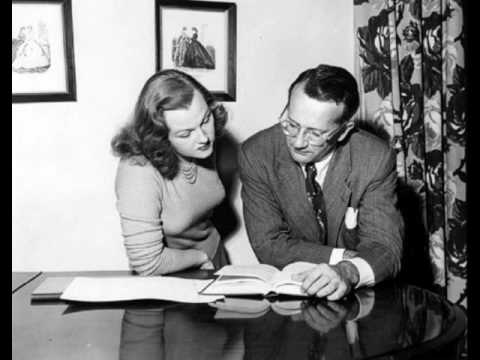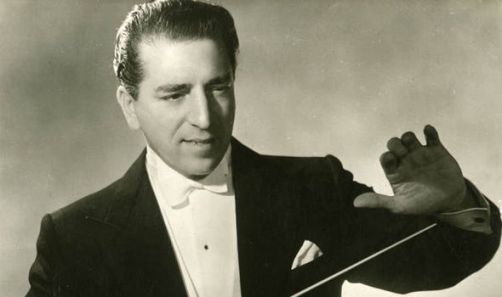Taking a break from the usual proceedings, I’m going to use this week to take a look at the folks behind some of the 210 #1s we’ve heard so far. The writers, the producers and, in the case of our first post, the conductors…
In the early days of the charts, when big productions and even bigger voices were all the rage, any self-respecting chart-topper needed an orchestra to back up them up. On the 45s of the time, nearly every #1 is assigned to both a lead artist and an orchestra. ‘Here in My Heart’, by Al Martino, with Orchestra under the direction of Monty Kelly… ‘Outside of Heaven’, by Eddie Fisher with Hugo Winterhalter’s Orchestra and Chorus…

Perhaps for reasons of convenience, the Official Singles Chart don’t list the orchestra, or it’s conductor, for any of the early chart-toppers. Which is strange, I suppose, as in modern times we have no problem with crediting ‘featured’ artists on a dance or rap track. Maybe it’s because we don’t actually hear their voices… Whatever the reason, several men have missed out on their moment in the record books. Winterhalter and Kelly, Frank Cordell, Stanley Black, Harold Mooney, Mitch Miller…

I’ve chosen Paul Weston as the frontman for this piece, though, thanks largely to his work with Frankie Laine. Weston was a Massachusetts born musician, who had been a pianist in a dance band, before becoming a song-writer and music director at Capital, and then Colombia Records. He conducted and arranged all three of Laine’s 1953 hits: ‘I Believe’ (still the song with the most weeks at #1 in the UK, sixty-five years on), ‘Hey Joe!’ and ‘Answer Me’. He also conducted on Jo Stafford’s ‘You Belong to Me’, Britain’s 2nd ever chart-topper. Stafford and Weston had married not long before recording the song.

Paul Weston with his wife, Jo Stafford
If Paul Weston were actually credited with his work on #1 singles, he would sit at joint 10th place in the all-time weeks at the top of the UK singles chart list with 29 weeks’ worth of chart-toppers, tied with ABBA and Take That, and one week behind Drake. Later in the 1950s he went on to do TV work, helped to start up the Grammy Awards, and worked for Disney. He passed away in the mid-nineties.
One conductor who did get credited on his hit records was the Italian, Annunzio Paulo Mantovani who, like all the best pop stars, went by just the one name: Mantovani. He was popular enough to score a solo, instrumental number one single in 1953: The Song from ‘The Moulin Rouge’, which had been a big hit in the cinemas that year. This success, and his subsequent fame is, I’m guessing, why he is the only conductor to be credited by the Official Charts Company, for his orchestral accompaniment on David Whitfield’s overwrought ‘Cara Mia’ in 1954.

Mantovani, doing his thing
Conductors and their orchestras became less essential once rock ‘n’ roll arrived, but they still occasionally popped up on the more bombastic number ones. The last one I can think of was Shirley Bassey’s ‘Climb Ev’ry Mountain’ / ‘Reach for the Stars’ double-‘A’ side from 1961, which was credited, on the vinyl at least, to Geoff Love and His Orchestra.
To the conductors, then, and their batons, which shaped the sound of the singles chart’s earliest years.

